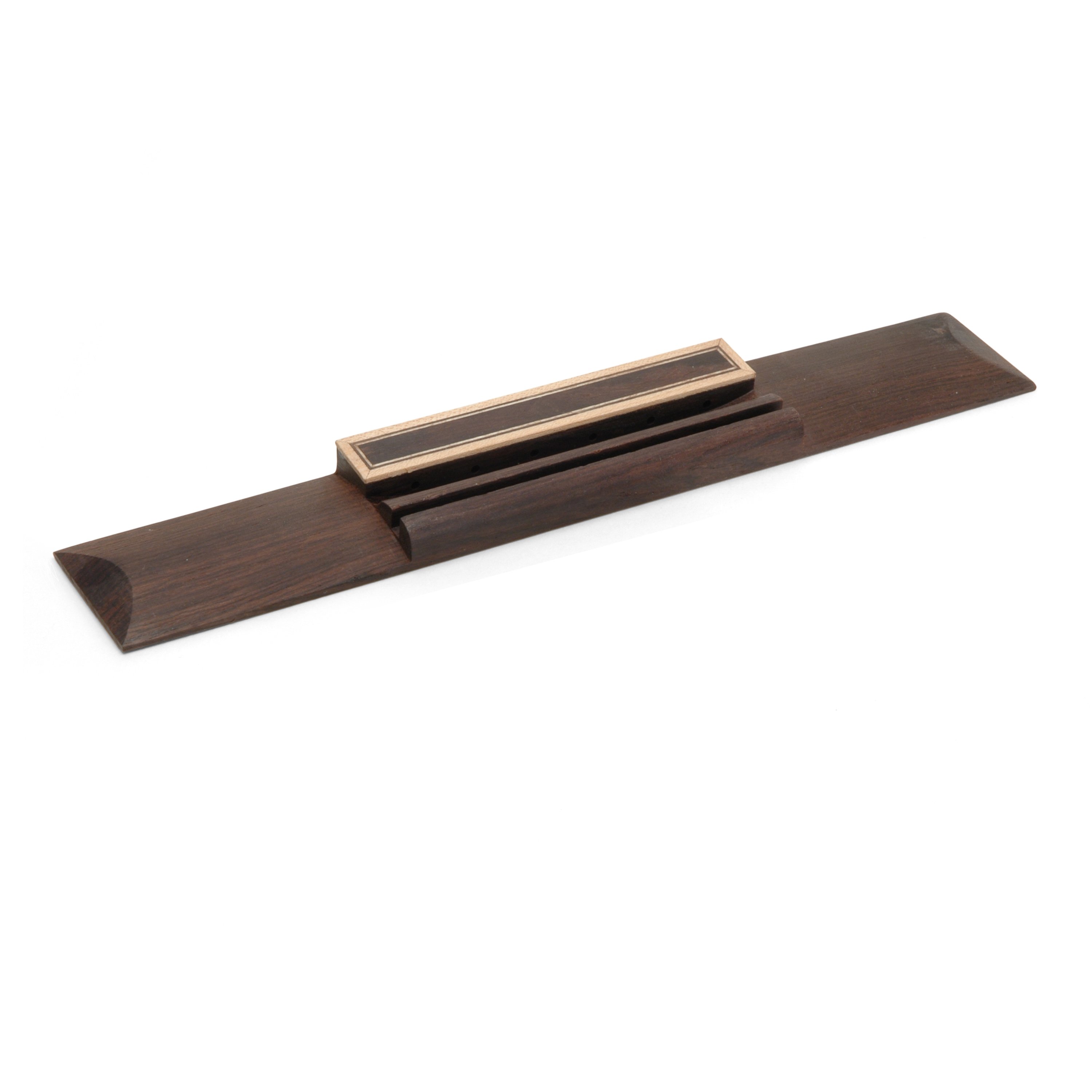Quick Cauls
Thomas Humphrey explains how to make classical guitar bridge clamping cauls with styrofoam.
Classical guitar maker Thomas Humphrey shared this trick for clamping a classical bridge, and determining bracing alignment on cedar-topped instruments… "When you're clamping the bridge on a classical guitar you must have a well-fit caul on the inside for the clamps to contact. Cedar tops in particular keep me on pins and needles because they're so fragile; they dent and ding easily, and excess clamping pressure can crush the wood fibers. Also, with cedar tops you can't use the old light bulb-inside-the box trick to see through the top to locate the braces (for making a caul) because cedar doesn't illuminate like spruce does. I use styrofoam to take an imprint of the top bracing before transferring it to a wooden caul. "Make a caul from a piece of wood 7" to 9" long x 1-1/2" wide x 3/4" thick (or whatever goes in and out of the soundhole easily). Then double-stick tape a 1/8" to 1/4" thickness of styrofoam to the block. When the block's clamped lightly in place, the styrofoam takes an imprint of the bracing pattern. Remove the block and saw along the imprint marks, right into the wood. Remove the styrofoam, deepen your saw cuts to match the height of the braces, and chisel out the waste to make channels which fit over the bracing. Chamfer the sharp hard edges of the caul to keep them from denting the wood, and be sure that the caul matches the curve of the top and/or the bottom of the bridge if there is a curve." 

